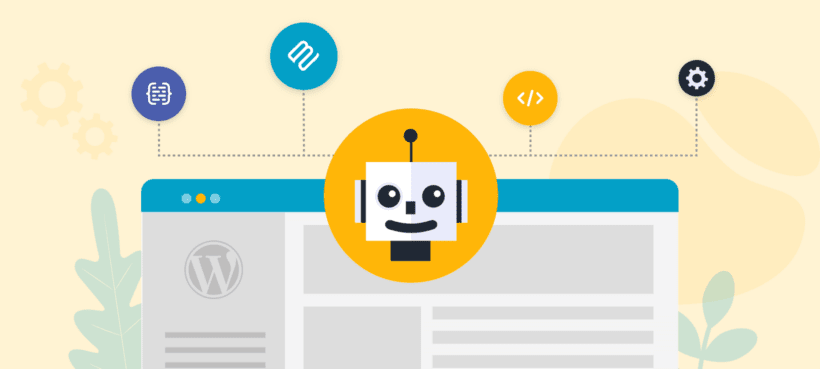
WordPress powers over 40% of the web, making it the most popular content management system globally. One of the reasons for its widespread adoption is its flexibility and ease of customization. In this beginner’s guide, we’ll explore the fundamentals of WordPress customization, empowering you to create a unique and personalized website tailored to your needs.
Getting Started with WordPress
WordPress offers two options: self-hosted or WordPress.org and WordPress.com. Once set up, you’ll access the WordPress dashboard, your website’s command center, where you can create, edit, and manage content effortlessly.
- You’ll need a domain name, web hosting, and WordPress installed to get started.
Why Choose WordPress?
WordPress offers numerous benefits that make it the preferred choice for website creation:
- User-Friendly Interface: WordPress features an intuitive dashboard and editor, making it easy for beginners to create and manage content without technical expertise.
- Flexibility and Customization: With thousands of themes and plugins available, WordPress allows users to customize their websites to suit their unique requirements, whether it’s a blog, portfolio, e-commerce store, or business website.
- Community Support: WordPress boasts a vast community of developers, designers, and users who contribute to its continuous improvement. You can find support, tutorials, and resources readily available online.
- SEO-Friendly: WordPress is inherently SEO-friendly, with features such as clean code, customizable permalinks, and plugins like Yoast SEO that help optimize your website for search engines.
- Scalability: Whether you’re starting with a simple blog or building a complex e-commerce platform, WordPress scales effortlessly to accommodate your needs as your website grows.
Understanding Themes and Templates
WordPress themes dictate your website’s appearance and functionality. Choose a theme that aligns with your vision and requirements, considering design, features, and responsiveness. Customize your theme using the WordPress Customizer, where you can tweak colors, fonts, layouts, and more, without touching any code.
Exploring Plugins for Added Functionality
WordPress plugins extend your website’s functionality, allowing you to add features such as SEO optimization, contact forms, security enhancements, performance optimization, and social media integration. Install and configure plugins from the WordPress repository or third-party sources to enhance your website’s capabilities.
Customizing Content with the Block Editor (Gutenberg)
The WordPress Block Editor, also known as Gutenberg, revolutionizes content creation by introducing a block-based approach. Create and customize content using blocks for text, images, galleries, videos, and embeds. Leverage block patterns and reusable blocks to streamline your workflow and maintain consistency across your website.
Advanced Customization Techniques
For those seeking deeper customization, WordPress offers advanced techniques like child themes, custom post types, and custom fields. Modify theme files, such as functions.php and style.css, to add custom functionality and styling. Implement custom page templates and leverage hooks and filters for granular control over your website’s behavior.
Optimizing Performance and Security
Optimizing your WordPress website’s performance and security is crucial for providing a seamless user experience and protecting against threats. Implement caching, image optimization, content delivery networks (CDNs), and regular backups to enhance performance and reliability. Ensure website security by using SSL, strong passwords, security plugins, and staying up-to-date with updates and patches.
Launching Your Customized WordPress Website
Before launching your website, conduct thorough testing to ensure responsiveness, cross-browser compatibility, and functionality across devices. Configure permalinks, SEO settings, and submit your sitemap to search engines for improved visibility. Remember to perform regular maintenance and updates to keep your website running smoothly.
Other CMS Options
While WordPress is the most popular CMS, several other options cater to different needs and preferences:
- Drupal: Ideal for complex websites requiring advanced functionality and scalability. It’s more developer-centric and may have a steeper learning curve for beginners.
- Joomla: Offers a balance between ease of use and flexibility, suitable for medium-sized businesses and community websites. It has a supportive community and robust features.
- Wix: A user-friendly website builder that’s suitable for beginners and small businesses. While it offers simplicity, it may lack the flexibility and scalability of WordPress for more extensive projects.
- Squarespace: Known for its stunning templates and easy-to-use interface, Squarespace is a popular choice for creatives and small businesses. It offers integrated hosting but may have limitations in terms of customization.
Conclusion
WordPress customization empowers beginners to create professional and dynamic websites with ease. By following this guide, you’ve gained insights into WordPress customization’s fundamentals, advanced techniques, and optimization practices. Continue exploring and experimenting with WordPress to unlock its full potential and create a website that truly reflects your vision.
Ready to customize your WordPress website with expert assistance? Contact SkyWeb Micro Solutions for professional WordPress development services!









